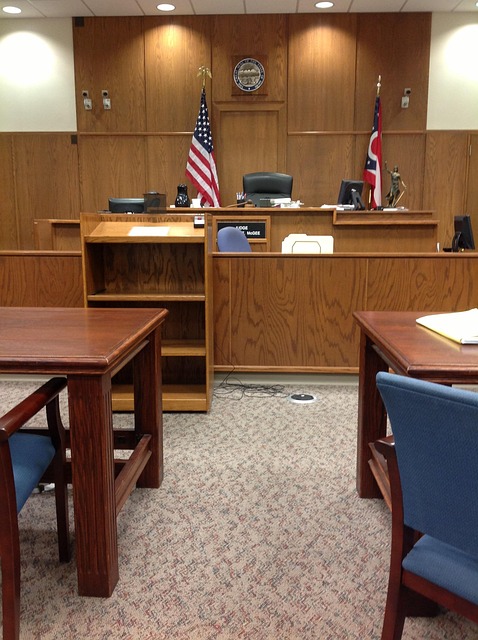Public Corruption Charges involve allegations of illicit behavior by officials, encompassing bribery, fraud, and conflict of interest. There are two primary proceedings: Administrative, handled internally by government agencies for discipline (faster resolutions like demotion or dismissal), and Civil, where private individuals or entities sue for losses or damages (longer timelines, potential substantial monetary compensation). Understanding these differences is crucial as they impact public trust. Administrative actions prioritize public integrity while civil litigation enables affected parties to claim damages for specific losses caused by corruption, fostering broader accountability.
“Uncovering the intricate web of public corruption charges, this article navigates critical legal landscapes. We explore two distinct approaches to addressing corruption: administrative proceedings and civil litigation. Understanding these differences is paramount in the global fight against illicit practices.
From definitional frameworks to their unique key features and underlying legal bases, we dissect each method. Additionally, we compare these approaches, highlighting when and why they diverge, offering valuable insights for legal professionals and enthusiasts alike.”
- Understanding Public Corruption Charges: A Brief Overview
- Administrative Proceedings: Definition and Key Features
- Civil Litigation for Corruption: Purposes and Legal Basis
- Comparing Approaches: When and Why They Differ
Understanding Public Corruption Charges: A Brief Overview

Public Corruption Charges refer to allegations of illicit behavior by public officials or those in positions of power, involving abuse of authority for personal gain. These cases encompass a range of activities, from bribery and fraud to embezzlement and conflict of interest. Understanding these charges is crucial as they differ significantly from regular criminal offenses in their procedures and potential consequences.
Two primary types of proceedings are Administrative and Civil. Administrative proceedings are typically initiated by government agencies focused on discipline and removal of corrupt officials. In contrast, civil proceedings involve private individuals or entities suing to recover losses or seeking damages due to corruption. The former often leads to faster resolutions and penalties like demotion or dismissal, while the latter can result in substantial monetary compensation but may take longer. Avoiding indictment is a key concern for those facing such charges, especially as these cases often resonate across the country, impacting not just the individuals involved but also the confidence of philanthropic and political communities in public institutions.
Administrative Proceedings: Definition and Key Features

Administrative proceedings are a specialized legal process distinct from traditional civil or criminal cases. These proceedings focus on addressing misconduct within governmental bodies and organizations, ensuring accountability for public officials and entities. Unlike civil lawsuits that aim to resolve private disputes, administrative actions are designed to maintain public integrity and protect the interests of philanthropic and political communities.
One key difference between administrative and civil proceedings lies in their objectives. While civil cases primarily seek monetary compensation or specific performance, administrative processes often lead to remedies like disciplinary action, fines, or even a complete dismissal of all charges. These proceedings are characterized by their internal nature, where governmental agencies investigate and prosecute the misconduct, ensuring swift and efficient justice without necessarily involving private parties as plaintiffs.
Civil Litigation for Corruption: Purposes and Legal Basis

In the fight against public corruption, civil litigation plays a crucial role, offering an alternative to criminal proceedings. The primary purpose of bringing a civil lawsuit for corruption is to hold accountable individuals or entities that have engaged in illicit acts, seeking compensation for any harm caused and restoring integrity to public institutions. Unlike criminal cases, which focus on punishment and deterrence, civil litigation aims to achieve extraordinary results by providing affected parties with a means to seek redress and recover damages.
When considering the differences between administrative and civil proceedings, it’s essential to understand that while both aim to combat corruption, they operate under distinct legal frameworks. Administrative actions often involve regulatory bodies imposing penalties or taking disciplinary measures against public officials or organizations. In contrast, civil litigation is a private dispute resolution process where individuals or entities can pursue damages for specific losses incurred due to corrupt practices. This avenue is particularly relevant when the harm extends beyond the corruptor and impacts the general public, allowing for broader accountability and compensatory measures, thereby reinforcing the rule of law in a comprehensive manner, for his clients.
Comparing Approaches: When and Why They Differ

When dealing with public corruption charges, the legal landscape presents a fascinating contrast between administrative and civil proceedings. These two approaches, while sharing common goals of accountability and justice, differ significantly in their methods and focus. Administrative proceedings are typically initiated by regulatory bodies or government agencies, aiming to discipline public officials for misconduct. They often involve internal investigations, hearings before administrative law judges, and the imposition of sanctions like demotion or removal from office, without necessarily seeking financial compensation for victims.
In contrast, civil proceedings are brought by aggrieved parties, such as individuals or organizations, seeking damages and restitution. This path is chosen when the alleged corruption results in tangible harm or losses. Civil suits can lead to jury trials, where the burden of proof is higher than in administrative cases. The focus here is not solely on discipline but also on achieving extraordinary results for his clients, whether that means financial compensation, injunctions against future misconduct, or both. These differences reflect the multifaceted nature of corruption and the varied needs for accountability and redress.
Public corruption is a complex issue, and understanding the nuances of different legal approaches is essential. This article has explored the distinct paths of administrative and civil proceedings in tackling public corruption charges. While both aim to address illicit behavior, their methods and focus differ significantly. Administrative proceedings offer swift action and internal discipline, focusing on organizational structures and policies. In contrast, civil litigation aims to hold individuals accountable, compensate victims, and deter future misconduct, often involving longer processes and substantial financial implications. Recognizing these differences is crucial for effective strategy and ensuring a comprehensive response to corruption, promoting transparency and integrity in public institutions.






